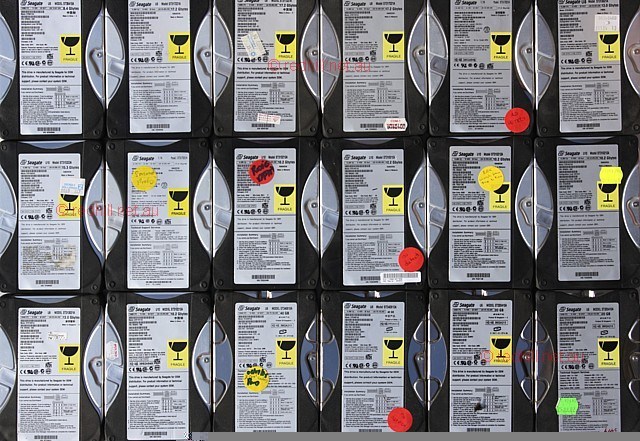
Photo: Red Hill.
Seagate U Series 5
The Seagate U5 had very poor reviews. Reputable overseas sources suggested that Seagate's claimed seek time for these was very optimistic and that the actual seek was around 14ms. Our own tests confirmed this, and the performance rating shown below is based not on Seagate's absurd 8.9ms claim but on a more realistic measured 13.8ms average seek. In years gone by, Seagate's claimed performance figures used to be spot on. It was a shame to see this once-reputable company stooping to this nonsense.
The trend to lower hard drive performance in the first few years of the new century had several factors driving it. First, the storage industry was trying, as best it could, to deal with relentless price pressure, particularly from the major OEMs who demanded ever larger, ever-cheaper hard drives for the underpowered retail systems they sold (and still sell) through the major chain stores. Performance was a non-issue for the likes of Hewlett-Packard and Compaq, certainly for their consumer boxes.
Second, there was a major technical problem: ever increasing track density (which is what gives us such high-capacity drives at such low prices) meant that the read head had to be positioned ever-more precisely (because the track is so narrow). This is difficult to do quickly: high-performance drives use much more expensive components, and really high-performance drives like Seagate's X15 (the fastest drive in the world right at this time) actually sacrificed a lot of capacity just to get more speed.
Third, most buyers knew distressingly little about hard drives, and could be bamboozled by "go-faster" marketing gimmicks which had little or no effect on real world performance. Prime among these was increases in external data rate: in theory ATA-100 allowd for data to flow off the drive at up to 100MB/sec — but a 100MB/sec external data rate is utterly pointless on a drive that can only produce about 40MB/sec even under perfect circumstances (such as reading a sequential stream of data stored on the outermost tracks (i.e., at the very beginning of the drive), played back without any interruptions at all — no multi-tasking, no temp file use, no DLL loading, and no swap file access). For a U Series 5 (or, indeed, any other IDE drive in production that year) an ATA-66 interface was equally as fast. In fact, a 1997 vintage ATA-33 interface would slow it down only marginally. ATA-100 would not perform any significantly useful function until 2002-3.
Despite this, marketing people consistently peddled the line that "oh, this drive is 50% faster — it's ATA-100". A car manufacturer might equally well say that "our new model goes twice as fast — the speedometer is marked all the way up to 300km/h". In a marketing environment as out of touch with reality as this, why should hard drive manufacturers bother improving the actual performance of their products? It was so much easier and cheaper to just make them sound faster. (Note that Seagate were not alone in this sharp practice: all the drive manufacturers were doing the same sort of thing, and though Seagate and Quantum were probably the worst offenders, these criticisms applied across the board.)
As for the U Series drives, capacity was up on the old model, and the pricing was as attractive as ever, but the U5 drives were not popular here. The way we saw it was why should we buy cheap, reliable, slow drives from Seagate when we could buy cheap, even more reliable, fast drives from Samsung?
Illustration: a miscellany of U Series drives, mostly U5 and U6 models; some retired after years of faithful duty, others replaced after failing in service.
| Performance | 1.14 | Reliability | AAX |
| Data rate | 330 Mbit/sec | Spin rate | 5400 RPM |
| Seek time | 13.8ms | Buffer | 512k |
| Platter capacity | 20GB | Interface | ATA-100 |
| ST310211 | 10GB | 1 GMR head | |
| ST320413 | 20GB | 2 GMR heads | * |
| ST330621 | 30GB | 3 GMR heads | |
| ST340823 | 40GB | 4 GMR heads |